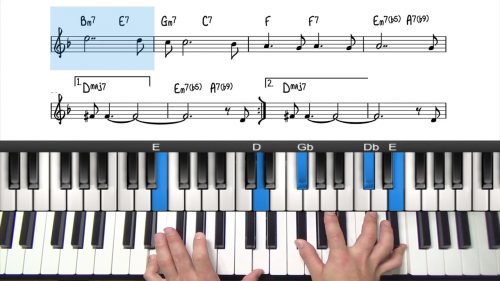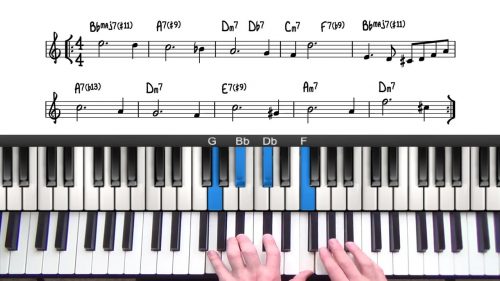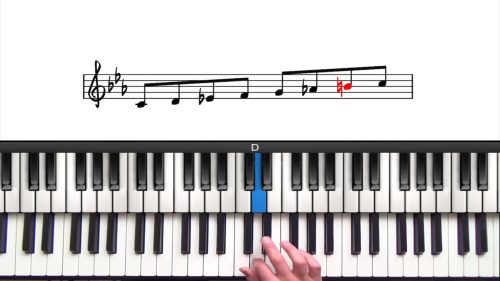Melodic Minor Modes Tutorial
Similar to the major scale, 7 modes can be derived from the melodic minor scale.
The melodic minor scale is an exotic sounding scale and its modes are used extensively in modern jazz improvisation.
This lesson provides an introduction to the melodic minor scale, explaining why jazz musicians use the scale and its modes.
We will then work through the 7 modes and highlight when and where you can apply them to your playing.
Before watching this lesson make sure you have a good understanding of the modes of the major scale.
The Jazz Minor Scale
If you’ve studied classical piano before, you may remember that the melodic minor scale is different depending on the direction you play it.
In classical theory, the ascending melodic minor scale contains a major 6th and major 7th and descending it contains a minor 6th and minor 7th — so it is identical to the natural minor scale when descending.
In jazz this approach is not used, instead, the scale is played the same was both ascending and descending. This scale is sometimes known as the jazz minor scale.
What Is The Melodic Minor Scale In Jazz?
The easiest way to think of the melodic minor scale is the major scale with a flat 3. Alternatively, you could think of it as the natural minor scale with a natural 6 and natural 7.
So what do we use the melodic minor scale for?
As the name suggests, the melodic minor scale is used to create more interesting melodic possibilities which can be applied to both major and minor keys.
There are no awkward intervals in the melodic minor scale which is what makes the scale so useful for soloing and improvisation. Try it yourself, run up and down the scale and you will see that it fits in the hand very nicely.
The melodic minor scale is also used extensively for harmonic substitution which is discussed in detail in other lessons in this series.
Unlike, the major and natural minor keys, you won’t find any tunes written in Melodic Minor keys. This is because the melodic minor does not have strong harmonic foundations and cannot function as an independent tonality
Instead we ‘borrow’ particular modes and chords from the melodic minor scale and use them in place of more basic sounds from both major and minor keys.
Before attempting to improvise with the melodic minor scale, you will need to familiarise yourself with the 7 modes and how and when they can be used.
Lesson Downloads
-
Melodic Minor Modes – All 12 Keys File Type: pdf
-
Melodic Minor Modes Cheat Sheet File Type: pdf
Practice Tips
-
the first step in learning modal theory is to memorise the formulas on the cheat sheet. This will give you a functional understanding of each mode adn how it relates to the major scale.
-
Try quizzing your self on the scale degrees that each mode contains. This can be done away from the piano.
-
Pick a key at random, then pick one of the 7 modes. How quickly can you find the notes? You should be able to easily visualise the mode, the primary chord tones, the upper extensions etc...
-
Don't just play the mode up and down. You can break the mode into triads, 7th chords, or different intervals such as 3rds, 4ths, 5th or 6ths, mix up these intervals and create different patterns.
- You can easily spend 30 minutes just playing 1 mode and exploring it's tones!








Thanks so much this lesson and series are very helpful. I couldn’t find them on the website, though. Can you tell me where to find them if I’m on the homepage? When I click Jazz piano lessons and see beginning, intermediate, and advanced this series is missing. I think…
Hi Josh,
You can find the “Scales & Modes For Improv” course in the Intermediate level jazz piano courses.
Let me know if you have problems finding it.
Cheers,
Hayden